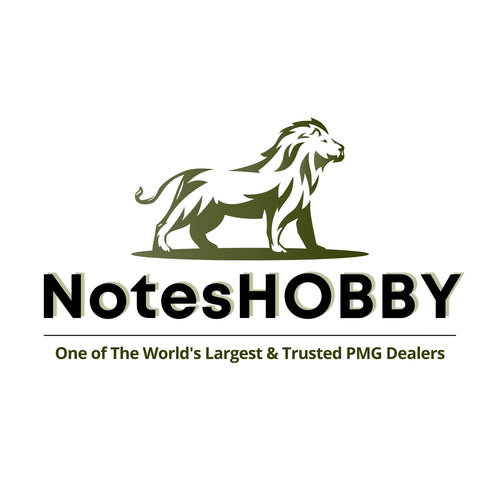Ever held a piece of paper that tells a nation’s story? That’s exactly what a Bangladesh banknote does. More than just money, each note is a canvas of culture, history, and transformation. Whether you're a traveler, investor, or collector, Bangladesh banknotes are full of surprises and meaning—if you know what to look for.
The Birth of the Taka

Bangladesh gained independence in 1971, and with that came the need for a new identity—including a national currency. The Bangladeshi Taka (৳) was born in 1972, replacing the Pakistani Rupee. The currency symbol is ৳, and the international code is BDT. The name “taka” is derived from ancient Sanskrit "tanka," a term historically used for coins.
Denominations and Series Over Time

Initial Denominations Post-Independence
The first series in 1972 included denominations of ৳1, ৳5, ৳10, and ৳100. Over time, newer notes were introduced and old ones replaced due to inflation, wear, and modernisation.
Evolution of Denominations
In the 1980s–1990s, new designs and denominations such as ৳20, ৳50, and ৳500 were added. In recent years, ৳200 and ৳1000 notes have been introduced for higher-value transactions.
Most Common Banknotes in Circulation Today
Here are the most commonly used denominations in 2025:
-
৳2 – Often coin or note depending on mint
-
৳5 – Bright reddish-pink, compact size
-
৳10 – Brown-orange, featuring agricultural scenes
-
৳20 – Vibrant green, often with national landmarks
-
৳50 – Deep purple, includes cultural imagery
-
৳100 – Sky blue, very common
-
৳200 – Yellow-gold, relatively new
-
৳500 – Reddish-orange
-
৳1000 – Light grey-blue, the highest value
Each note varies in size, color, and design theme.
Withdrawn or Discontinued Notes
Some earlier issues, especially those from the 1970s and 80s, have been removed from circulation but remain highly sought after by collectors. These include:
-
Early Governor signature variants
-
Misprints and short series
-
Commemorative editions that were never reissued
Design Elements of Bangladesh Banknotes
Each note tells a story.
-
National landmarks like the Shaheed Minar and Jatiyo Sangsad Bhaban
-
Famous personalities like Bangabandhu Sheikh Mujibur Rahman
-
Agricultural and industrial achievements of Bangladesh
-
All notes are printed in Bengali script, with some English in certain editions
Security Features
Counterfeiting? Not so fast. Modern Bangladesh banknotes include:
-
Watermarks with the portrait of Bangabandhu
-
Color-shifting ink
-
Security threads
-
See-through registration marks
-
Microtext and UV features
Though polymer has not yet been widely adopted, talks of its introduction are ongoing.
Bangladesh Bank and Its Role
The Bangladesh Bank, established in 1971, manages the currency issuance, monetary policy, and foreign exchange reserves.
Key responsibilities:
-
Approving new banknote designs
-
Controlling money supply
-
Anti-counterfeit measures
-
Managing inflation through controlled printing
International Collectibility

Thanks to historical transitions and design uniqueness, Bangladesh banknotes are hot in the collector world.
-
Found on eBay, banknote forums, and online banknotes store
-
Price varies from $1 to over $1000 for rare issues
-
Grading is done based on UNC (uncirculated), VF (very fine), and G (good)
How to Start Collecting Bangladesh Banknotes
Thinking of diving in? Here’s how:
-
Start with circulated notes from recent years
-
Use platforms like eBay, Numista, or Online Banknote Store
-
Invest in a banknote album with sleeves
-
Check for security features and signature variations
Future of Bangladesh Banknotes
Where are we headed?
-
Digital Taka (e-Taka) initiatives are in early discussion
-
Bangladesh may move toward a cashless ecosystem, like many Asian countries
-
Expect AI-designed, tech-embedded notes in the next decade
Fun Facts and Trivia
-
The first-ever banknote featured a hand-sketched map of Bangladesh!
-
Some notes have printing errors worth thousands of dollars today
-
The word “Taka” is also used colloquially to mean “money” in general
Bangladesh banknotes are more than paper—they're pocket-sized history books. They chronicle a nation’s journey, celebrate culture, and showcase resilience. Whether you’re a casual traveler or a hardcore collector, these notes are a beautiful representation of a vibrant, ever-evolving country.
FAQs
1. What is the rarest Bangladesh banknote?
The rarest is arguably the 1972 ৳1 note with the first governor's signature and misprint error.
2. Are Bangladesh banknotes made of paper or polymer?
Currently, most are made of cotton-based paper, though discussions are ongoing about polymer adoption.
3. How can I verify if a Bangladesh banknote is genuine?
Check for watermark, color shift ink, see-through window, and security thread.
4. Where can I buy old Bangladeshi notes?
Try Numista, eBay, Facebook collector groups, and local auctions.
5. Is it legal to collect and trade Bangladeshi currency internationally?
Yes, but make sure you're following customs and currency export regulations of both Bangladesh and your country.


